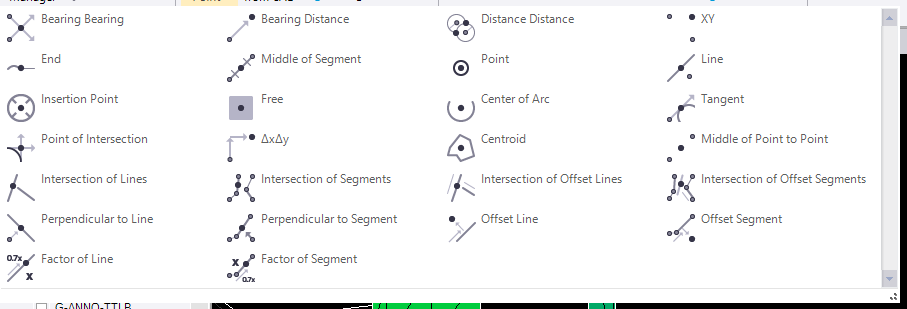You use the Right Click Snap Functionality like
Bearing Bearing (pick two locations and type in the Bearings from each location
Bearing Distance (Pick one location and then enter the Bearing and Distance)
Distance Distance (Pick two locations and enter the two distances to compute the possible intersections and then select the correct Intersection)
XY (Take the X of one point / end point etc in the model and the Y of another point in the model)
Each of the snaps will do a different activity.
You can also access all of these in the Create Point Command if you click the pull down arrow you will get a large dialog showing all of the snap methods

You can also use the Create COGO command (and this is not specifically my thing, but in there you can create points using many different methods (this is a Surveyors Tool to create a drawing from data on a plat sheet or from a cadastral drawing etc. and I understand it works pretty well and has many options.
Hope that this helps
Alan